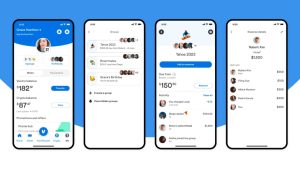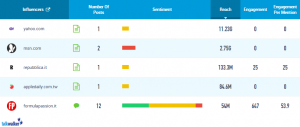During my time with Ambassador, I’ve had the fortune of working with a number of incredible B2B brands to build out their referral marketing programs. HP and SAP are two of the most notable examples, but there have been several others.
With many of those B2B clients, I’ve been asked to help address a common question:
When is the right time to offer a B2B referral incentive.
This is an interesting — and sometimes difficult — question to answer because most people assume that there’s only one time to pay out a B2B referral incentive: When a referred lead closes. If I refer you to a B2B software company that’s offering $ 500 for a referral, most programs stipulate that I’ll only see cash when you sign up and become a customer.
That’s a perfectly appropriate approach to paying out referrals, but it has one major flaw: Most B2B sales cycles are long and many businesses’ close rates are low.
What we’ve found with our B2B customers (particularly the ones with sales cycles that are longer than 30 days) is that ambassadors tend to lose interest in a referral program if their referral activity isn’t quickly rewarded. If they have to wait 30, 45, or 60 days to see some sort of financial reward for a referral, they’re less inclined to participate.
So, How Can You Work Around This?
To help our customers avoid this, we’ve recommended offering a smaller incentive for referring a qualified lead (or whatever a company considers a qualified entry point into their pipeline). If that lead ultimately closes, that same referrer is then given the larger incentive for referring a new customer.
This is effective for one very big reason: When an ambassador knows that there’s a short-term incentive for simply referring a qualified lead (and a potentially bigger reward for that customer closing), it removes a critical barrier to participation and immediately ramps up referral activity.
Qualitatively and quantitatively, we’ve seen this work time and again for our customers. In fact, we analyzed referral metrics of two customers — one that follows this best practice and one that doesn’t. Here’s what we found:
Customer X, which only offers an incentive for a closed sale, generated a lower number of shares over a 30-day period
Customer Y, which offers a small referral incentive for a qualified lead and a larger incentive for a closed sale, saw a 75% higher referral share rate
The bottom line: Even if the incentive for referring qualified leads is low (i.e., a $ 25 gift card — a reasonable amount to pay for qualified B2B leads), it almost always ramps up referral activity. And, like any marketing activity, the more qualified referrals you get into your pipeline, the better your chances are of driving a healthy ROI.
The Next Big Question: What’s the Right Type of Incentive to Offer?
I’ll get to the point: Cash is king — whether it comes in the form of actual cash (PayPal or Dwolla) or gift cards. While points, loyalty credits, and discounts might work for B2C referral programs, B2B referrers aren’t interested in those incentives. Instead, they respond to cold, hard cash.
For more on that — including examples of incentives and CTAs that we’ve seen work really well in B2B referral programs — you’ll have to download our newest eBook, “When, What, and How Much? A Comprehensive Guide to Structuring B2B Referral Incentives.”
In it, we share tips for how to structure your incentives, which types of incentives to focus on, and one way you can avoid offering huge lump sum incentives. To download the free eBook, simply click on the button below and dive in.
Business & Finance Articles on Business 2 Community(67)






